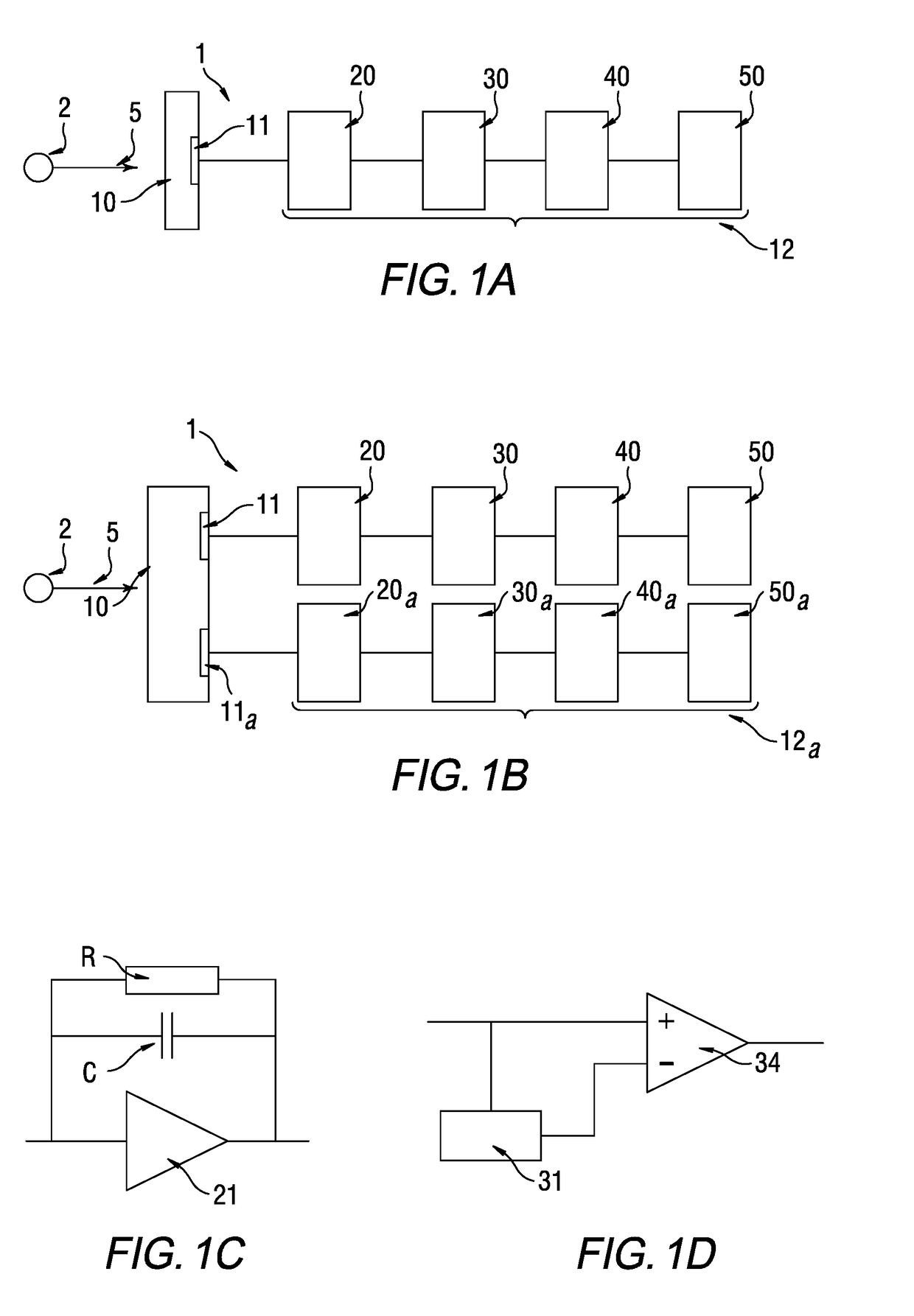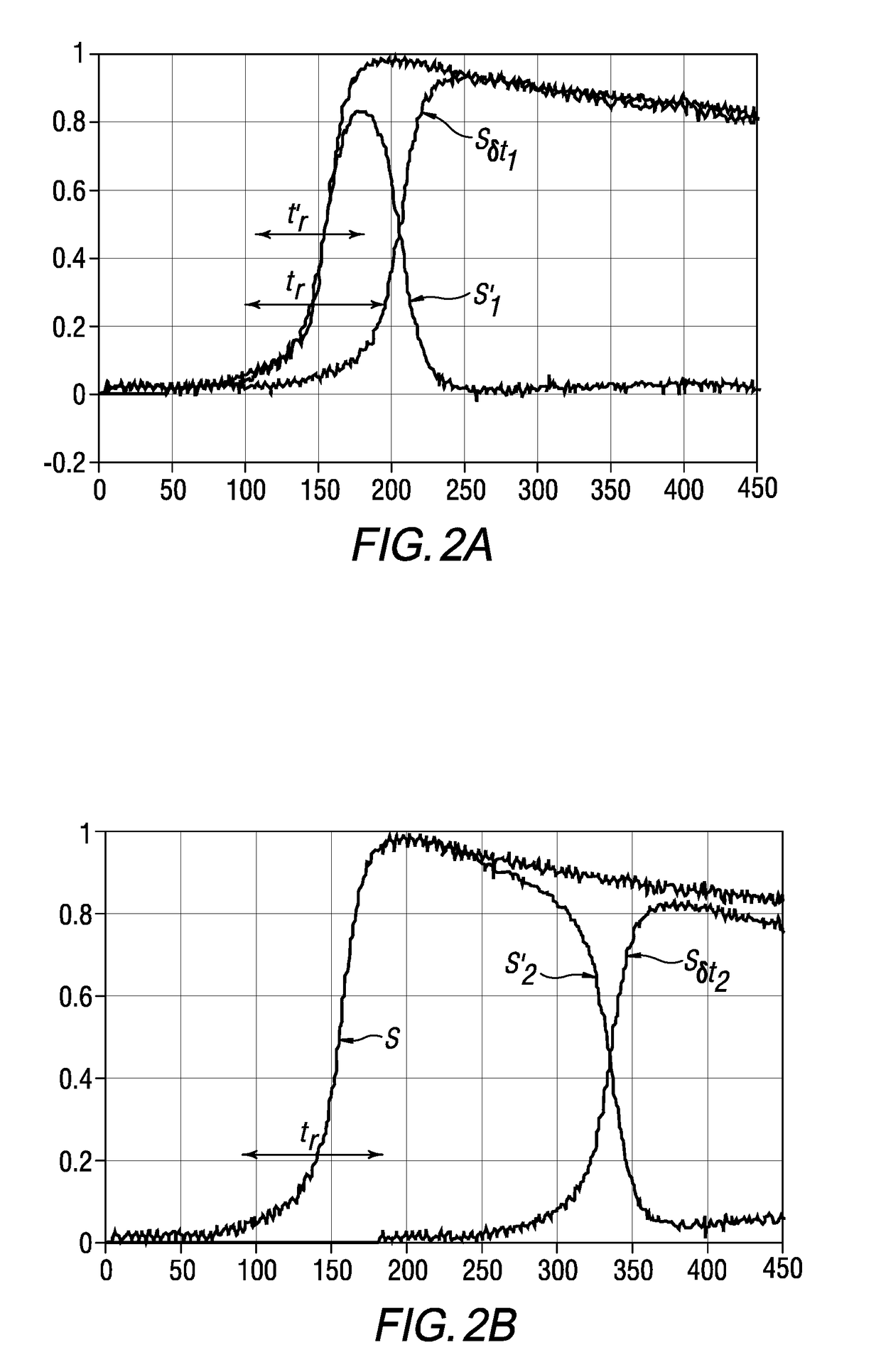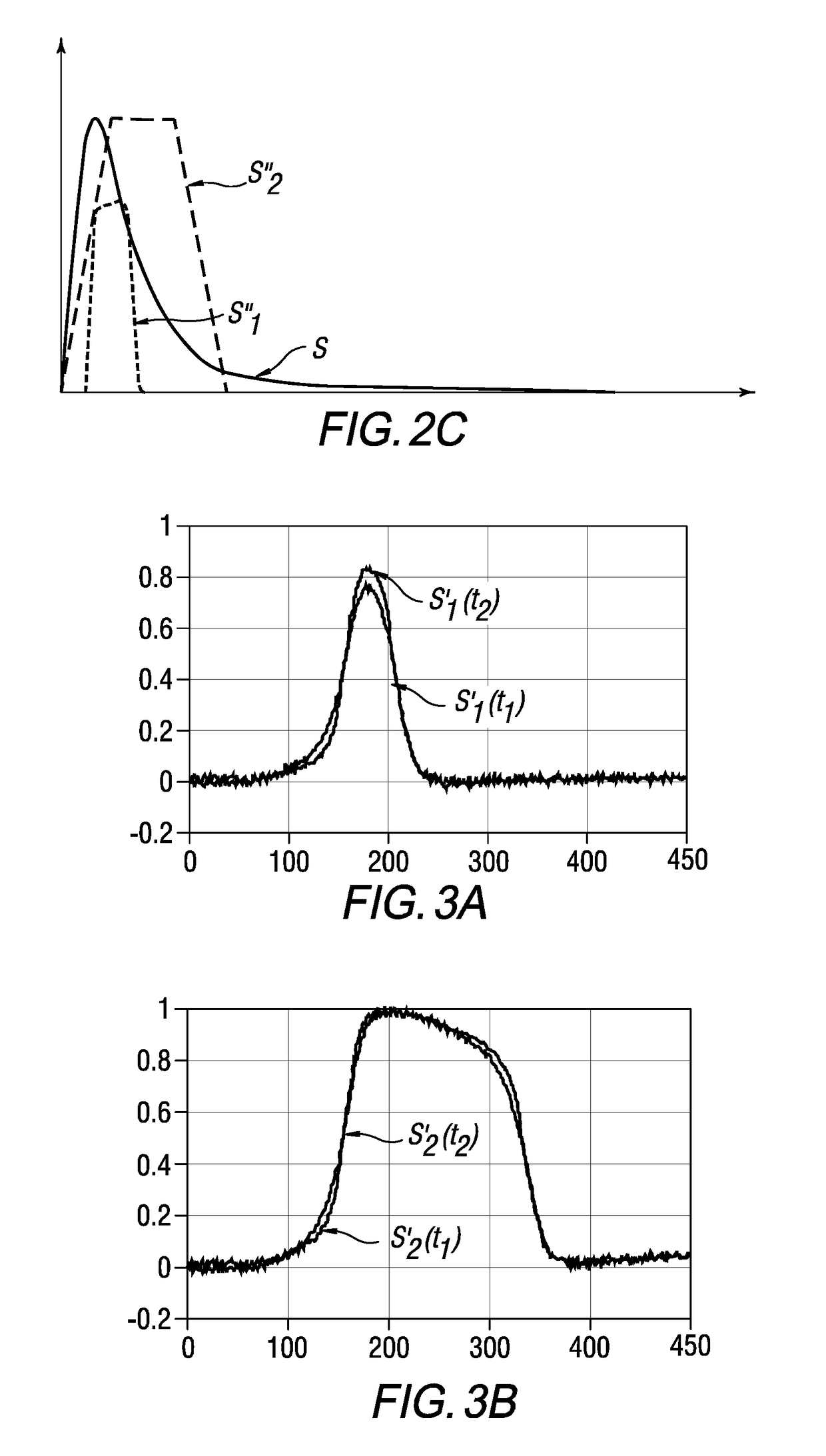Method for processing a pulse generated by a detector of ionizing radiation
a technology of ionizing radiation and pulses, applied in the direction of radiation measurement, instruments, measurement devices, etc., can solve the problem that the pulse generated by pile-ups cannot be used to determine the energy of one incident particl
- Summary
- Abstract
- Description
- Claims
- Application Information
AI Technical Summary
Benefits of technology
Problems solved by technology
Method used
Image
Examples
Embodiment Construction
[0097]FIG. 1A shows a device 1 allowing the invention to be implemented. The device includes a detector 10, able to interact with ionizing radiation 5 emitted by a source 2 of irradiation. By ionizing radiation, what is meant is radiation formed from particles able to ionize matter. It may be alpha particles, beta particles, x-rays or gamma rays, or even of one or more neutrons. In the example shown, the radiation is x-ray or gamma-ray formed from photons the energy of which is, for example, comprised between 1 keV and 2 MeV.
[0098]In the example shown, the detector includes the semiconductor CdTe, but another semiconductor commonly implemented in the detection of ionizing radiation, Ge, Si, or CdZnTe for example, could be used instead. When a particle, in the present case a photon, of the ionizing radiation 5 interacts in the detector 10, charge carriers form and migrate to a collecting electrode 11, an anode for example. The amount of charge Q collected by the electrode 11 depends,...
PUM
 Login to View More
Login to View More Abstract
Description
Claims
Application Information
 Login to View More
Login to View More - R&D
- Intellectual Property
- Life Sciences
- Materials
- Tech Scout
- Unparalleled Data Quality
- Higher Quality Content
- 60% Fewer Hallucinations
Browse by: Latest US Patents, China's latest patents, Technical Efficacy Thesaurus, Application Domain, Technology Topic, Popular Technical Reports.
© 2025 PatSnap. All rights reserved.Legal|Privacy policy|Modern Slavery Act Transparency Statement|Sitemap|About US| Contact US: help@patsnap.com



